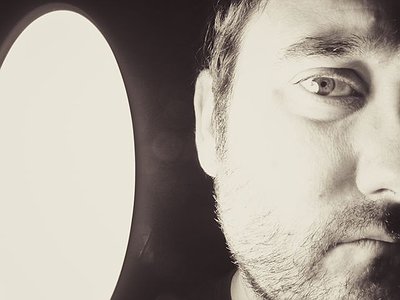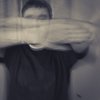When did you start writing/producing music - and what or who were your early passions and influences?
I started experimenting with music in the mid-nineties, messing around with four-tracks and sequencers, samplers, old keyboards and anything I could get my hands on to record music. I was influenced by a lot of early Hip Hop, Electro and '80s electronic bands through to new wave and punk and then onto labels like Warp Records and Detroit techno in the early nineties. I found these particular eras of music to be ground-breaking in style and innovation, they captured the imaginations of generations, myself included.
What do you personally consider to be the incisive moments in your artistic work and/or career?
The ever-changing progress of technology from the old to the new - together with the developmental shift in software and music-making instruments, which allows for a more flexible approach to composing and arranging music. Alongside the technical side of things, to work with other artists can be very enlightening. It can change the course of how you see and hear things in music. Some pivotal moments for me have been my recent collaborations with Karst, Hessien, Black Elk and Bluhm.
What are currently your main compositional- and production-challenges?
I go through phases of ups and downs, like most artists. Finding inspiration can be hard sometimes but composing never seems to be a major issue. The production challenges depend on the project I am involved in. If, for example, I was making something that was out of my comfort zone, like music for a client, then I do need to broaden the sound and shift the style I work with into other genres, which I find challenging.
I am constantly moving forward with my own work, collaborating with other musicians, most recently with Genoveva Kachurkova who is a good friend and vocalist. She sings in the Sv.Zlata Meglenska choir in Macedonia. The Bluhm project has opened up the way I work with vocals and she has been a joy to work with. The music hasn’t been so much of a challenge in compositional or production terms but more of an extension of my previous work with an added human element which really lifts the sound into another level.
The electro-acoustic work I am involved in as Hessien together with Charles Sage is similar. Both projects allow more flexibility and they both happen naturally. The end results are worth the time and effort spent during the musical process.
A previous project I have been involved in is Black Elk and this was more from a production point of view, working with Ian Hawgood, Danny Norbury and Clem Leek. It was pretty challenging as I was working with Clem’s piano and Danny’s cello pieces alongside Ian’s textured work. The music is so effortless and after many months of late nights on the project it came together and is something we are all very proud of.
What do you usually start with when working on a new piece?
It depends on the project; if I’m working on Maps and Diagrams I base the general notion on something that will sound dense, layered and textured. I’d start with some pad and/or synth parts first and build things up from there.
For Atlantis, I would begin with a more synthesised, automated sound, maybe get a rhythmic flow going and see what happens. This is usually a more incomprehensible and randomly generated style of music, compared to Maps and Diagrams. I really have no formula when it comes to sound and composition. Things happen, sometimes by accident and I follow those routes, whichever way it may take me.
How strictly do you separate improvising and composing?
I don’t separate either, I just let the intensity that I get from the music be the factor that will dictate the flow of the piece. If I feel that improvisation is the best thing for that time then I’ll generally follow those vibes, and vice versa. Composing can play an important role too. I generally combine the two and don’t get drawn into thinking about anything too technical.
How do you see the relationship between sound, space and composition?
I think it’s important for the sound-space aspect to be present in certain styles of music but I do like to have an element of density in my music. I want it to be wide-sounding and full but somehow I think I do keep some space in the compositions, I’m not sure how I do that though.
The later Maps and Diagrams material has more space within the material than the Atlantis project for example. The composition side of things falls nicely with the sound and space aspect. For me, it’s not about trying to understand the technicalities in music - it’s about communication and what feels right at that particular moment and time.
Do you feel it important that an audience is able to deduct the processes and ideas behind a work purely on the basis of the music? If so, how do you make them transparent?
No. For me, I don’t think it’s important for anyone to decipher anything in my music. I’d like to think they hear what they want to hear, respond and enjoy the music for what it is. If they want to dissect the working process it’s up to them. I get asked a lot about technique and process but I really have no formula that I follow in music and wouldn’t know where to start to explain what I do!
In how much, do you feel, are creative decisions shaped by cultural differences – and in how much, vice versa, is the perception of sound influenced by cultural differences?
I have no reference to my music being shaped, formed or existing for cultural differences, this doesn’t impact on any of my musical output.
The relationship between music and other forms of art – painting, video art and cinema most importantly - has become increasingly important. How do you see this relationship yourself and in how far, do you feel, does music relate to other senses than hearing alone?
All art forms are in their own rights their own separate entities. The difference comes when the crossover of multimedia and other creative outputs bring those works to another level. Music can be visual and visualised and it can be felt by the audience with the marrying of cinematic pieces or artwork. These art-forms become one when they're well executed and they can relate to many senses if the audience is open to that.



